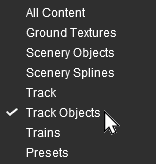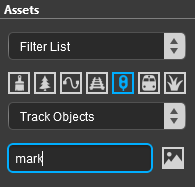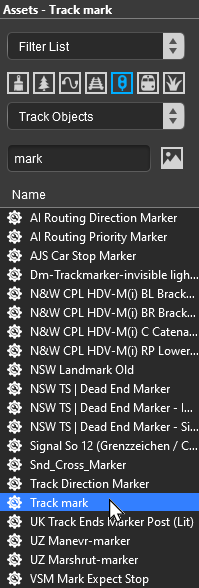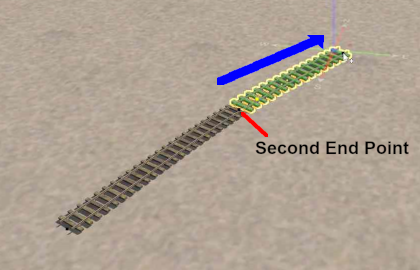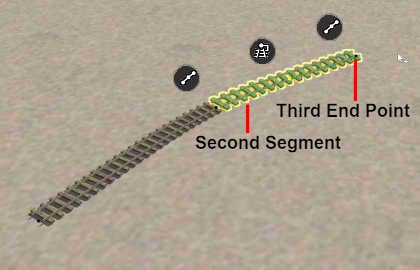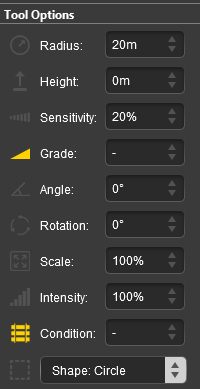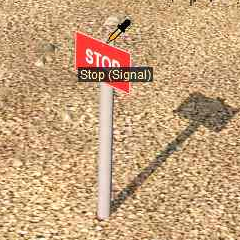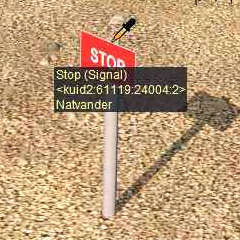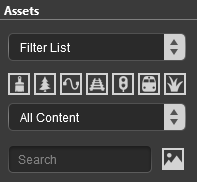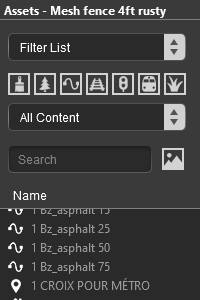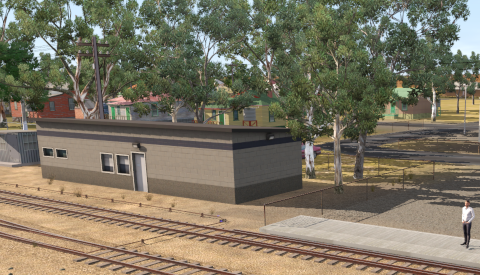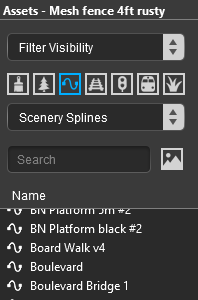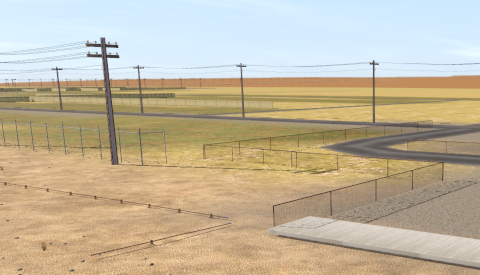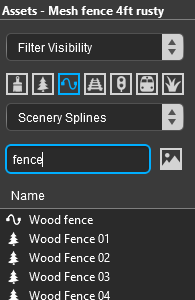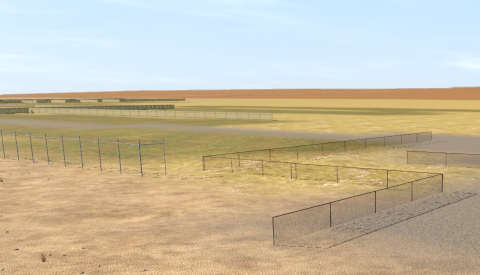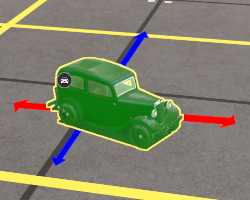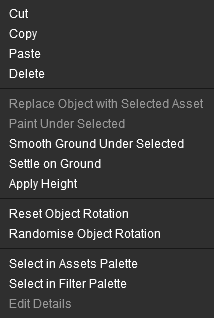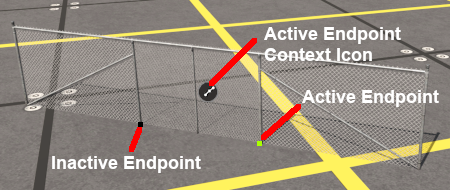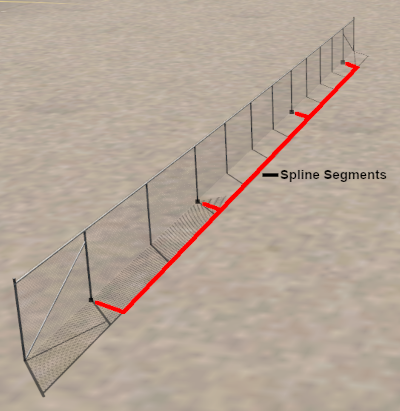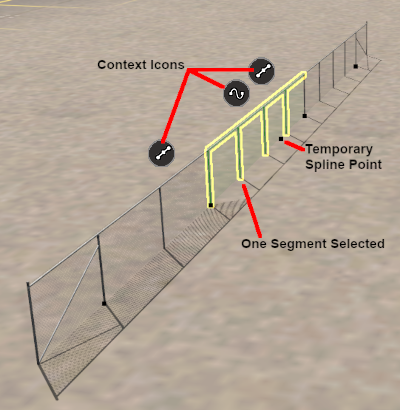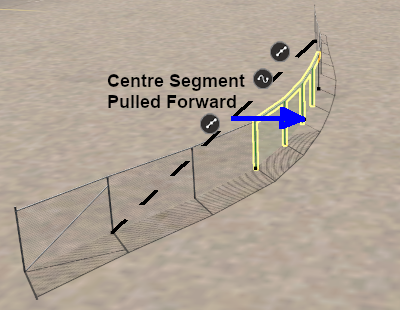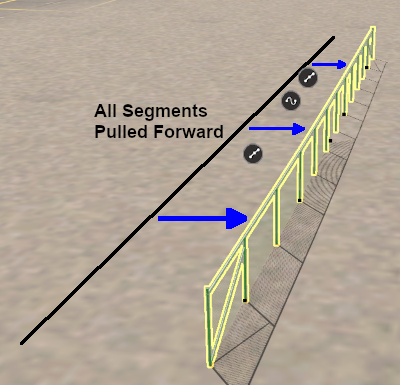How to Use S20 Tools
m (→The Free Move Tool) |
(→Placing a Scenery or Track Spline) |
||
| Line 822: | Line 822: | ||
=='''Placing a Scenery or Track Spline'''== | =='''Placing a Scenery or Track Spline'''== | ||
| + | <span style="font-weight: 700; font-size: 17px; color: white; background-color: blue;"> Adding a Spline </span><br> | ||
| + | <br> | ||
To start the process of laying a track or spline, follow the steps listed above for placing a scenery mesh object.<br> | To start the process of laying a track or spline, follow the steps listed above for placing a scenery mesh object.<br> | ||
| Line 854: | Line 856: | ||
<td>[[image:DotPoint6.JPG|link=]]</td> | <td>[[image:DotPoint6.JPG|link=]]</td> | ||
<td>Repeat '''Steps''' [[image:DotPoint4.JPG|link=]] and [[image:DotPoint5.JPG|link=]] above to continue laying the spline.</td> | <td>Repeat '''Steps''' [[image:DotPoint4.JPG|link=]] and [[image:DotPoint5.JPG|link=]] above to continue laying the spline.</td> | ||
| + | </tr> | ||
| + | </table> | ||
| + | <br> | ||
| + | <span style="font-weight: 700; font-size: 17px; color: white; background-color: blue;"> Spline Tool Options </span><br> | ||
| + | <br> | ||
| + | Splines have two '''Placement Tool''' settings in the '''Tool Options Palette'''. | ||
| + | |||
| + | <table width=900> | ||
| + | <tr valign="top"> | ||
| + | <td width=200>[[image:PlacementSplineTools_S20.png|link=]]</td> | ||
| + | <td> | ||
| + | <table bgcolor=#000000 width=700 cellpadding=2> | ||
| + | <tr valign="top"> | ||
| + | <td> | ||
| + | <table bgcolor=#ffffff width=696 cellpadding=2> | ||
| + | <tr valign="top"> | ||
| + | <td width=90><span style="font-size: 15px; font-weight: 700; color: gold; background-color: black;"> Grade </span></td> | ||
| + | <td>spline gradient (see '''Notes:''' below). The finishing '''end point''' of each spline segment will be set higher (for a '''positive''' grade) or lower (for a '''negative''' garde) than the starting '''end point'''</td> | ||
| + | </tr> | ||
| + | <tr valign="top"> | ||
| + | <td colspan=2> | ||
| + | <table bgcolor=#ffffb0> | ||
| + | <tr valign="top"> | ||
| + | <td width=90 align="right">'''Range:''' </td> | ||
| + | <td width=696>0% (flat) to ±100% (steep but '''not''' vertical)</td> | ||
| + | </tr> | ||
| + | </table> | ||
| + | </td> | ||
| + | </tr> | ||
| + | <tr valign="top"> | ||
| + | <td width=90><span style="font-size: 15px; font-weight: 700; color: gold; background-color: black;"> Condition </span></td> | ||
| + | <td>this applies to '''Track Spline''' objects and sets the track '''condition''' (or "ride comfort") for each segment</td> | ||
| + | </tr> | ||
| + | <tr valign="top"> | ||
| + | <td colspan=2> | ||
| + | <table bgcolor=#ffffb0> | ||
| + | <tr valign="top"> | ||
| + | <td width=90 align="right">'''Range:''' </td> | ||
| + | <td width=696>1% (terrible track condition) to 100% (perfect track condition)<br> | ||
| + | |||
| + | the '''Track Condition''' can also be set for each track segment in its '''Context Menu''' <span style="font-size: 15px; font-weight: 700; color: white; background-color: black;"> Edit Properties </span> option</td> | ||
| + | </tr> | ||
| + | </table> | ||
| + | </td> | ||
| + | </tr> | ||
| + | </table> | ||
| + | </td> | ||
| + | </tr> | ||
| + | </table> | ||
| + | <br> | ||
| + | <table bgcolor=#000000 width=700 cellpadding=2> | ||
| + | <tr valign="top"> | ||
| + | <td> | ||
| + | <table bgcolor=#ffffb0 width=696 cellpadding=2> | ||
| + | <tr valign="top"> | ||
| + | <td>[[image:NotePad.PNG|link=]]</td> | ||
| + | <td><span style="font-size: 17px; font-weight: 700;">Notes:'''</span><br> | ||
| + | ---- | ||
| + | </td> | ||
| + | </tr> | ||
| + | <tr valign="top"> | ||
| + | <td> </td> | ||
| + | <td>The <span style="font-size: 15px; font-weight: 700; color: gold; background-color: black;"> Grade </span> may cause some confusion. It is defined as '''vertical rise''' divided by '''horizontal distance''' converted to a percentage figure. So a grade of 100% (the maximum allowed) would mean a gradient formed by both measurements having the same value (e.g. a rise of 50m over a distance of 50m). A vertical grade (such as up a cliff face) would have an infinite grade which is currently impossible in Surveyor.</td> | ||
| + | </tr> | ||
| + | </table> | ||
| + | </td> | ||
| + | </tr> | ||
| + | </table> | ||
| + | </td> | ||
</tr> | </tr> | ||
</table> | </table> | ||
Revision as of 20:17, 10 January 2023
The information in this Wiki Page applies to Surveyor 2.0 (S20) as found in Trainz Plus.
This document is under development
|
|
|||||||||
The Tools Palette
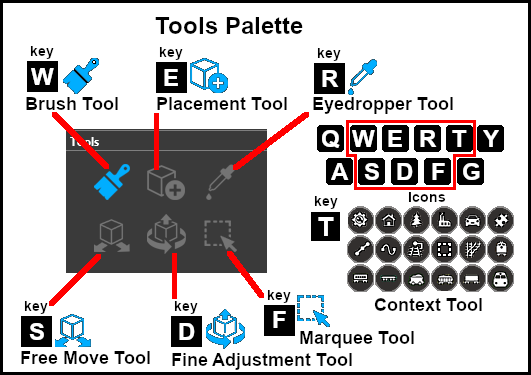 |
|
|||||||||||||||||
The Brush Tool
The Brush Tool is used for painting the route. It can:-
When selected, the Brush Tool will show two drop down menu lists. |
 |
| The first drop down menu will set the Brush Target, the type of brush. The Targets are:- |
|||||
|
 |
|
|||
Ground Height
This brush tool uses the Tool Options Palette. If this palette is not visible on the screen then refer to Notes: Palettes at the top of this document.
| When the Ground Height Target is selected, the second drop down box will give a choice of several Ground Height tools. The choices are:- |
|
|
 |
| The available brush tool options are shown in the Tool Options Palette with a Gold coloured icon next to their names. Those options that have their icon greyed out will be ignored, but they can still be edited. | ||||||||||||||||||||||||||||||||||||
Height Up/Height Down  |
Set Height  |
Grade 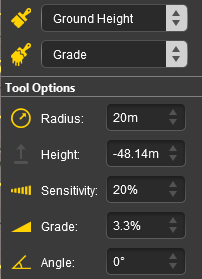 |
|
|||||||||||||||||||||||||||||||||
|
Ground Texture
This brush tool uses the Tool Options Palette. If this palette is not visible on the screen then refer to Notes: Palettes at the top of this document.
When the Ground Texture Target is selected, the second drop down box will be disabled - there are no brush texture tool choices.
The available brush tool options are shown in the Tool Options Palette with a Gold coloured icon next to their names. Those options that have their icon greyed out will be ignored, but they can still be edited.
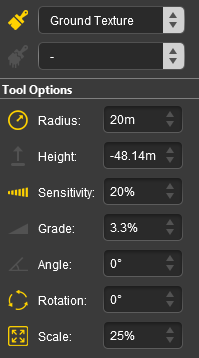 |
|
||||||||||||||||||||||||||||
|
Scrapbook Data
This brush tool uses both the Tool Options Palette and the Scrapbook Palette. If these palettes are not visible on the screen then refer to Notes: Palettes at the top of this document.
|
| The Scrapbook Brush When the Scrapbook Data Target is selected, the second drop down box will give a choice of two Scrapbook Data tools. |
|
|
|
|
| The available brush tool options are shown in the Tool Options Palette with a Gold coloured icon next to their names. Those options that have their icon greyed out will be ignored, but they can still be edited. | |||||||||||||||||||||||||||||||
Scrapbook Brush  |
Scrapbook Clone  |
|
|||||||||||||||||||||||||||||
|
The Scrapbook Palette 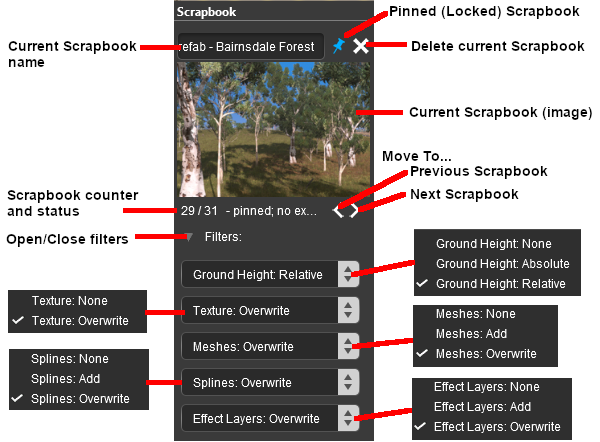 |
|
|||||||||||||||||||||||||||||||||||||||||||
Edit Effect Layers...
When this Target is selected, the Edit Effect Layers options will appear. This is the same as selecting Edit Effect Layers ... from the Trainz Edit Menu.
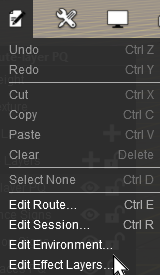 |
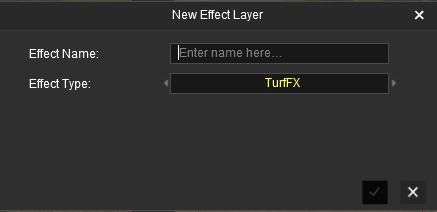 |
 |
 |
More information on creating and editing Effect Layers can be found on the Trainz Wiki at:- |
The Placement Tool
The Placement Tool is used to add objects to the route. This tool uses the Assets Palette. If this palette is not visible on the screen then refer to The first step is to identify and select the particular object that you want to add to the route. Placing a Scenery Mesh ObjectIndividual "non-spline" scenery objects that are not attached to track are often referred to in Trainz terminology as Scenery Mesh Objects.
Placing a Scenery or Track Spline Adding a Spline
Deleting an Asset
The Eyedropper Tool
|
||||||||||||||||||||||||||||||||||||||||||||||||||||||||||||||||||||||||||||||||||||||||||||||||||||||||||||||||||||||||||||||||||||||||||||||||||||||||||||||||||||||||||||||||||||||||||||||||||||||||||||||||



